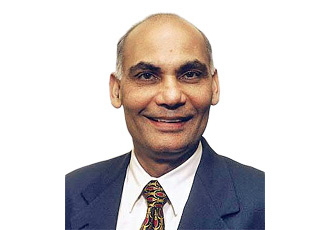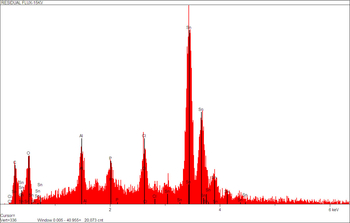SMT- Vapor Phase Soldering: The Comeback Kid
Vapor phase soldering (VPS), also known as condensation soldering, has gone through changes in popularity. It was the process of choice in the early 1980s, but its use declined considerably for two reasons: problems with the VPS process itself and improvements in IR processes. The problems with VPS are mostly higher defects, such as wicking in leaded parts and tombstoning in chip components. The convection-dominant IR system provides efficient heating without the inherent problems of VPS.
VPS uses the latent heat of liquid vaporization to provide heat for soldering. This latent heat is released as the vapor of the inert liquid condenses on component leads and PCB lands. In VPS, the liquid produces a dense, saturated vapor that displaces air and moisture. The temperature of the saturated vapor zone is the same as the boiling point of the vapor phase liquid. This fluid does not have any environmental concerns. The peak soldering temperature is the boiling temperature of the inert liquid at atmospheric pressure.
VPS does heats uniformly, and no part on the board (irrespective of its geometry) exceeds the fluid-boiling temperature. The process is suitable for soldering odd-shaped parts, flexible circuits, pins, and connectors,as well as for reflowing tin/lead and lead-free surface mount package leads. The VPS process also automates easily.
The use of nitrogen in convection systems for soldering in an inert environment is increasing due to the widespread use of low solids and no-clean fluxes and solder pastes. Because VPS provides an inert soldering environment without the use of nitrogen, the industry has been looking again at this process. It is more difficult to provide uniform heating in larger ceramic and plastic BGAs — even with convection-dominant systems — VPS is also being considered because of its efficient and uniform heating characteristics. With the emergence of lead-free solder, some companies are again turning to vapor phase. However, one reason VPS practically disappeared by the late 1980s was the excessive incidence of wicking, in which the solder wicks up the leads of Jor gull-wing devices, causing solder opens. This wicking is caused by the lead and the land heating at different rates during VPS, and is exacerbated by non-coplanarity (the failure of the lead to touch the land). The surface of the lead reaches the melting point of the solder a few seconds before the surface of the land during VPS. This causes the solder paste to melt, wet, and wick up the lead before the land becomes hot enough for the molten solder to wet it. By the time the land has reached the melting point of the solder paste, there is not enough solder left on the land to form a good solder joint.
One way to reduce the incidence of solder wicking during VPS is to preheat the assembly. Preheating can reduce the problem, but not eliminate it. The leads heat faster than the land, even after a preheat. Another approach may be to use solder paste-containing powders with different melting points so that some paste remains on the pad when it reaches the solder melting point. However, this is a theoretical solution — finding a special formulation of solder paste
is a limited and expensive option.
Where does VPS fit? It is may be an option for low-volume niche applications with numerous large ceramic BGAs with practically no leaded or chip components.
With the impending explosion of leadfree soldering, companies are reconsidering
VPS, especially when dealing with backward- and forward-compatibility issues. Backward compatibility is a situation in which the majority of components are tin/lead, but some are lead-free. Forward compatibility is a reverse of this — where most components are lead-free, but some are still tin/lead. In either situation, there is a problem of soldering components with differing heat-input requirements.
In the case of backward compatibility, you cannot go to a higher reflow temperature for just a few lead-free components, as the majority of tin/lead components are likely to be affected adversely. In the case of forward compatibility, using a lead-free profile may damage some of the tin/lead components. VPS is being considered as a solution to provide a middle-of-the-road compromise reflow profile to keep both tin/lead and lead-free components happy — an option that convection system users prefer. But this reflow profile is not right for tin/lead or leadfree. Selective laser soldering allows the use of appropriate reflow profiles for the majority of components — whether using convection reflow or VPS reflow profiles. In this case, there is no compromise, and all components are happy.
VPS uses the latent heat of liquid vaporization to provide heat for soldering. This latent heat is released as the vapor of the inert liquid condenses on component leads and PCB lands. In VPS, the liquid produces a dense, saturated vapor that displaces air and moisture. The temperature of the saturated vapor zone is the same as the boiling point of the vapor phase liquid. This fluid does not have any environmental concerns. The peak soldering temperature is the boiling temperature of the inert liquid at atmospheric pressure.
VPS does heats uniformly, and no part on the board (irrespective of its geometry) exceeds the fluid-boiling temperature. The process is suitable for soldering odd-shaped parts, flexible circuits, pins, and connectors,as well as for reflowing tin/lead and lead-free surface mount package leads. The VPS process also automates easily.
The use of nitrogen in convection systems for soldering in an inert environment is increasing due to the widespread use of low solids and no-clean fluxes and solder pastes. Because VPS provides an inert soldering environment without the use of nitrogen, the industry has been looking again at this process. It is more difficult to provide uniform heating in larger ceramic and plastic BGAs — even with convection-dominant systems — VPS is also being considered because of its efficient and uniform heating characteristics. With the emergence of lead-free solder, some companies are again turning to vapor phase. However, one reason VPS practically disappeared by the late 1980s was the excessive incidence of wicking, in which the solder wicks up the leads of Jor gull-wing devices, causing solder opens. This wicking is caused by the lead and the land heating at different rates during VPS, and is exacerbated by non-coplanarity (the failure of the lead to touch the land). The surface of the lead reaches the melting point of the solder a few seconds before the surface of the land during VPS. This causes the solder paste to melt, wet, and wick up the lead before the land becomes hot enough for the molten solder to wet it. By the time the land has reached the melting point of the solder paste, there is not enough solder left on the land to form a good solder joint.
One way to reduce the incidence of solder wicking during VPS is to preheat the assembly. Preheating can reduce the problem, but not eliminate it. The leads heat faster than the land, even after a preheat. Another approach may be to use solder paste-containing powders with different melting points so that some paste remains on the pad when it reaches the solder melting point. However, this is a theoretical solution — finding a special formulation of solder paste
is a limited and expensive option.
Where does VPS fit? It is may be an option for low-volume niche applications with numerous large ceramic BGAs with practically no leaded or chip components.
With the impending explosion of leadfree soldering, companies are reconsidering
VPS, especially when dealing with backward- and forward-compatibility issues. Backward compatibility is a situation in which the majority of components are tin/lead, but some are lead-free. Forward compatibility is a reverse of this — where most components are lead-free, but some are still tin/lead. In either situation, there is a problem of soldering components with differing heat-input requirements.
In the case of backward compatibility, you cannot go to a higher reflow temperature for just a few lead-free components, as the majority of tin/lead components are likely to be affected adversely. In the case of forward compatibility, using a lead-free profile may damage some of the tin/lead components. VPS is being considered as a solution to provide a middle-of-the-road compromise reflow profile to keep both tin/lead and lead-free components happy — an option that convection system users prefer. But this reflow profile is not right for tin/lead or leadfree. Selective laser soldering allows the use of appropriate reflow profiles for the majority of components — whether using convection reflow or VPS reflow profiles. In this case, there is no compromise, and all components are happy.

 Registration is Open for SMT Course
Registration is Open for SMT Course
Ray Prasad will be teaching his flagship SMT course:
